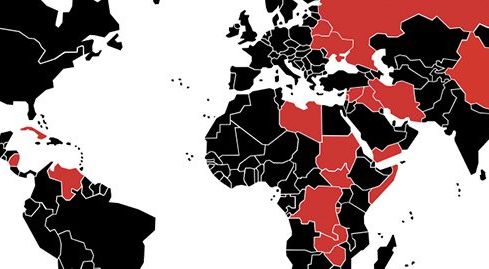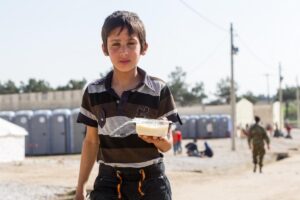15 Sep 2021 |
original article: ‘I just want to leave’: Afghan refugees speak out about conditions at Fort McCoy
“I have depression, stress and anxiety, insomnia and it’s getting worse.”
18-year-old Afghan refugee
“Waiting in line for hours to get food, wearing the same clothes day after day, getting harassed by some of the Afghan men, not knowing the timeline for resettlement — all are problems a pair of Afghan women say they have faced staying at Fort McCoy military base in western Wisconsin, though officials said Tuesday the issues are being addressed.
“There are many people who don’t have anything to wear, anything to eat,” an 18-year-old Afghan woman told the Wisconsin State Journal on Saturday. “They make us wait here for six hours behind the cafeteria, and when you go in there’s nothing left.
“I just want to leave this place so I can start my own life.”
The two women spoke by phone with the Wisconsin State Journal Saturday about their experience at Fort McCoy on the condition of anonymity. They said they feared a negative reaction from some Afghan men housed at the base, many of them former members of the U.S.-trained Afghan National Army who have caused problems, such as harassing women and skipping people in the food lines.
Fort McCoy officials have not granted media requests to interview refugees nor access to the base. They have shared some photos and videos from inside. They have also discouraged volunteers from speaking with the press.
Thomas Gresback, a Fort McCoy spokesperson with the Department of Homeland Security, said Fort McCoy experienced supply chain issues in being able to provide enough food to feed the 12,500 Afghans now at the base. But Fort McCoy has been working to address the issue, Gresback said, and “over the last five days we improved that significantly.” He said the refugees are offered “three hot meals per day” with a protein, a carbohydrate option, fruits, vegetables and drinks.
Gresback said he visited the base’s cafeteria line Monday and saw that Afghans were “very happy” with the changes Fort McCoy made.
“We feel we’ve come a very long way in a very short period,” Gresback told the State Journal on Tuesday.
Fort McCoy is one of eight military bases housing refugees who fled from Afghanistan after the recent collapse of the country’s government to the Taliban. Though the number of refugees in Wisconsin has grown week by week, the U.S. halted incoming flights last week after discovering cases of measles among the refugees, including one case at Fort McCoy.
Gresback acknowledged other complaints raised by Afghan evacuees such as a lack of access to clothing donated to Fort McCoy. Gresback said personnel at the base are “working absolutely as fast as we can” to distribute clothes.
He noted that Fort McCoy is still accepting donations and is especially looking for warm clothes for winter. Donations of new or gently used clothing that has been freshly laundered can be made at the Salvation Army in Madison at 3030 Darbo Drive from 10 a.m. to 2 p.m. Monday through Friday, as well as other Salvation Army locations across Wisconsin.
The second woman who spoke with the State Journal said she desperately wants to change her clothes. On Saturday afternoon, the 40-year-old said she was still wearing the same clothing she wore while escaping from Afghanistan out of the Kabul airport as her country fell to the Taliban. She arrived at Fort McCoy on Sept. 1, 10 days before the interview.
“I couldn’t bring anything from home,” she said, adding she developed an infection after not being able to change her only pair of underwear. “I have to wash that and wait until that is dried and I can wear them again.”
The State Journal was unable to reconnect with the women Tuesday to ask whether conditions had indeed improved over the last few days.
Chris Hennemeyer, who is leading the U.S. Conference of Catholic Bishops’ volunteer efforts at Fort McCoy, said the long lines for food are “a thing of the past.”
“(Those issues), they’re all being worked out, and some of them have been sorted out really well,” Hennemeyer said when asked about the long cafeteria lines and the clothing shortage. “The lines that existed a week or so ago, you don’t see them anywhere.”
But one major thing has not been sorted out: when the Afghans get to leave.
Both women said they have Special Immigrant Visas, and are frustrated they’re not being processed through the military base more quickly. After traumatic experiences at the Kabul airport, they’re ready to start their new lives living and working in the U.S.
“I’m not saying I’m not glad I got out of there. I’m saying I’m very happy. I’m very glad I got out of there,” the 18-year-old said of fleeing Afghanistan. “It’s just that I want to be processed out fast. I’m losing lots of my time. It’s a waste of time staying here (at Fort McCoy).”





